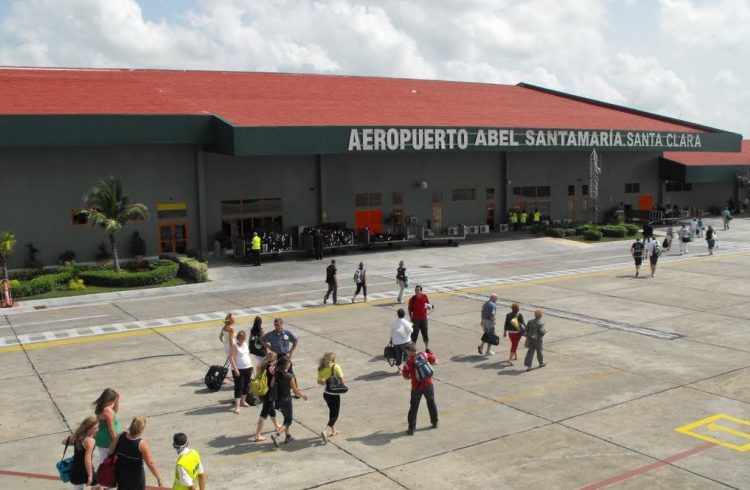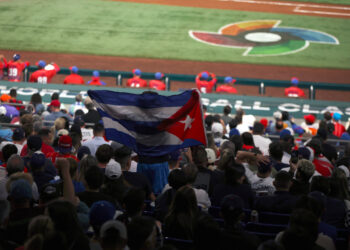When the JetBlue’s Airbus A-320 arrives in Santa Clara from Fort Lauderdale, Florida this August 31, the freeze on direct regular flights between Cuba and the United States, which have not made since 1961, will be over.
Deputy Minister of Development for the Cuban Ministry of Transport, Eduardo Rodriguez, said at a press conference that this step is a contribution to the process of improving relations between the two countries.
As was been reported and confirmed by the president of the Institute of Civil Aeronautics of Cuba (IACC), Alfredo Cordero, there will be an initial period of three weekly flights (Monday, Wednesday and Friday), and from October 30 they will be of daily frequency.
On 1 September other trips will begin, Silver Airways airline will also go to Santa Clara; while on the 7th of that month American Airlines will fly to Holguín and Cienfuegos, and in the following days will arrive in Camagüey, Villa Clara and Matanzas, which would total 11 daily flights in total. In the winter it is expected that they will be joined by other US airlines bound for different Cuban cities.
In the case of flights to Havana, the eight airlines proposed by the US Department of Transportation are still waiting for the ruling of the county’s government.
An agreement signed between Havana and Washington in December 2015 envisages that up to 110 daily flights could be reached. These would be distributed among ten international airports on the island, with guaranteed security. Cordero confirmed that the conditions for flights to begin have been created all the appropriate security – both operational and for aviation, at the same time he recalled that that IACC has worked with the US Transportation Safety Administration for over 15 years. These regular flights will coexist with the charter flights that have been taking place since the late 1970s, and will likely impact on ticket sales. In fact, there have already been movement in this area when JetBlue announced tickets from $99.
“It’s a new day for those traveling to Cuba and we have prepared properly. We are proud to start a new era in travel to the island with affordable fares and great service,” Marty St. George, Executive Vice President of Commercial & Planning for JetBlue said in a company statement announcing the news at the end of last July.
According to the authorities, the announced airlines and those that will join later will have representation in Cuba to care for their customers.
The number of Americans who come to the island has soared up to 84 percent in the first half of 2016 since the Presidents Raúl Castro and Barack Obama announced the thaw in relations a year and a half ago, and despite the ban on American citizens traveling to Cuba as tourists.
Ferries just around the corner
Boat trips could be close, according to the Sunshine State News, which says that in 2015, the US State Department gave several ferry companies permission to begin sailing between southern Florida and Cuba, and that they are awaiting approval by the Cuban authorities.
The site About Travel says that when the service is finally launched, they hope that the boats heading to Havana will come from at least two different destinations: Port Everglades of Florida (Fort Lauderdale) and Key West. Miami, the Port of Manatee, Tampa and Saint Petersburg are other departure points which are being considered by the ferry companies. Santiago de Cuba is also in the companies’ crosshairs.
“I can hardly imagine anything more exciting than the union of two countries that are so close, and yet have been so separated for more than 55 years,” says Matt Davies, CEO of Direct Ferries, a global reservation site for ferry services that will offer Cuban reservations.
“We hope that Cuba will sign the bilateral agreement very soon, and we will be prepared with the widest selection of ferry routes to the country,” says Davies. About Travel believes that the service could begin in late 2016.
A traditional ferry from Port Everglades to Havana would take you about 10 hours one way, according to Direct Ferries. However, the Spanish company Baleària plans to operate a speed boat between Key West and Havana, which would cross the Straits of Florida in just three hours. Rates usually start around $300 per round trip.
Taking a flight may be faster, but there are advantages to travelling to Cuba by sea, specifically the rates are generally lower, no weight limits on baggage. In addition to carrying cars, although it is still unclear whether the Cuban government will allow Americans to drive their private cars on the island.
Ferry service from the US to Cuba is not new: various ferries made daily trips between southern Florida and Havana in the 1960s. The approval of new ferry routes between the two countries is a step behind other shipping links, like the Adonia cruise ship, of Carnival cruises, which docked in Havana in May 2016. Carnival and the French cruise line Ponant have been the first to receive permission for crossings from US to Cuba.










